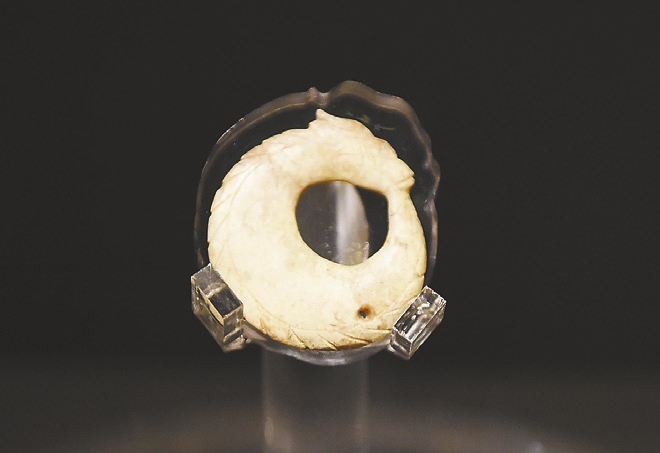
CHINESE archaeologists recently published the results of a series of new excavations related to the Hongshan Culture, a Neolithic culture originating in Northeast China known for its carved jade. The excavations have revealed a large settlement as well as hundreds of other smaller sites, raising the number of Hongshan Culture sites from a little over 90 to more than 500 in Liaoning Province. Active during the late Neolithic period some 6,500 to 5,000 years ago, the Hongshan Culture extended throughout a 200,000-square-kilometer area of what is today the West Liaohe River Basin in Northeast China. During the new round of excavations in 2022, archaeologists made several great discoveries, including the remains of grains, buildings used for sacrifices and a large settlement site belonging to the Hongshan Culture. At the Ma’anqiaoshan Ruin Site, human skeletons as well as a complete set of agricultural tools were unearthed from the ruins of homes. After researching the discovery, archaeologists found that the people of the Hongshan Culture had become an agricultural society about 6,400 years ago and mainly ate grains, which breaks from the theory that “the Hongshan people sustained themselves through a combination of fishing and hunting.” Before the new discovery, fishing and hunting were known to be main activities in Hongshan ancestors’ life, proved by the large number of traces of animal and fish bones found in previous archaeological sites. In the late period of the Hongshan Culture, the Hongshan people built large-scale altars, temples and mounds in the Niuheliang region in Liaoning. Despite these finds, there was little evidence that gave archeologists an idea of what people’s daily life was like back then. This has changed, however, with the discovery of a large settlement site in Niulianghe containing 27 homes. Present research shows that the Hongshan people’s houses were semi-underground and made use of long entryways. “The discovery of a Hongshan residential area also provides more specific details into the materials they used for production, and their life and social organization, giving new evidence for us to dig deeper into the ancient Hongshan Culture,” said Li Xinquan, deputy director of the Liaoning Provincial Institute of Cultural Relics and Archaeology. Diverse pottery and stone wares made from different materials have been unearthed from ruin sites. Archaeologists also found complete sets of agricultural tools including a plow for seeding, stone sickle, stone mill and another stone plow that was painted red. Experts say these agricultural tools were specifically used for sacrificial ceremonies. The discovery demonstrates that besides sacrificing to goddesses and their ancestors, the Hongshan people also made sacrifices to wish for a better harvest. “The Hongshan Culture has always been known for its highly developed jade and pottery handicraft and mature sacrificial system, all of which required the support of a stable and prosperous society,” said Zhang Huizhi, a Beijing-based archaeological research fellow. A stone-carved human head unearthed from the Caomaoshan Site, a life-sized head of a goddess unearthed from the Niuheliang Site and animal-shaped jade wares used in sacrificial ceremonies have become icons of the Hongshan Culture. The culture’s large altars and goddess temples are considered by scholars to be impressive architectural achievements as well. The archaeological site at Niuheliang is a unique ritual complex associated with the Hongshan Culture. Archaeologists have discovered an underground temple complex at the site, which included an altar, in addition to cairns. The temple was constructed of stone platforms and had painted walls. Archaeologists have named it the “Goddess Temple” due to the discovery of a clay female head with inlaid jade eyes. Besides murals on the walls, clay figurines up to three times the size of real-life humans were discovered in the Goddess Temple. The existence of complex trading networks and monumental buildings, such as the temple, point to the existence of “chiefdoms” among these prehistoric communities. “The Hongshan Culture originated from the communication and integration of diverse ethnic groups during their migration, intermarriage and other activities,” noted Sun Yonggang, a history researcher at Chifeng University in North China’s Inner Mongolia Autonomous Region. (Global Times) | 
